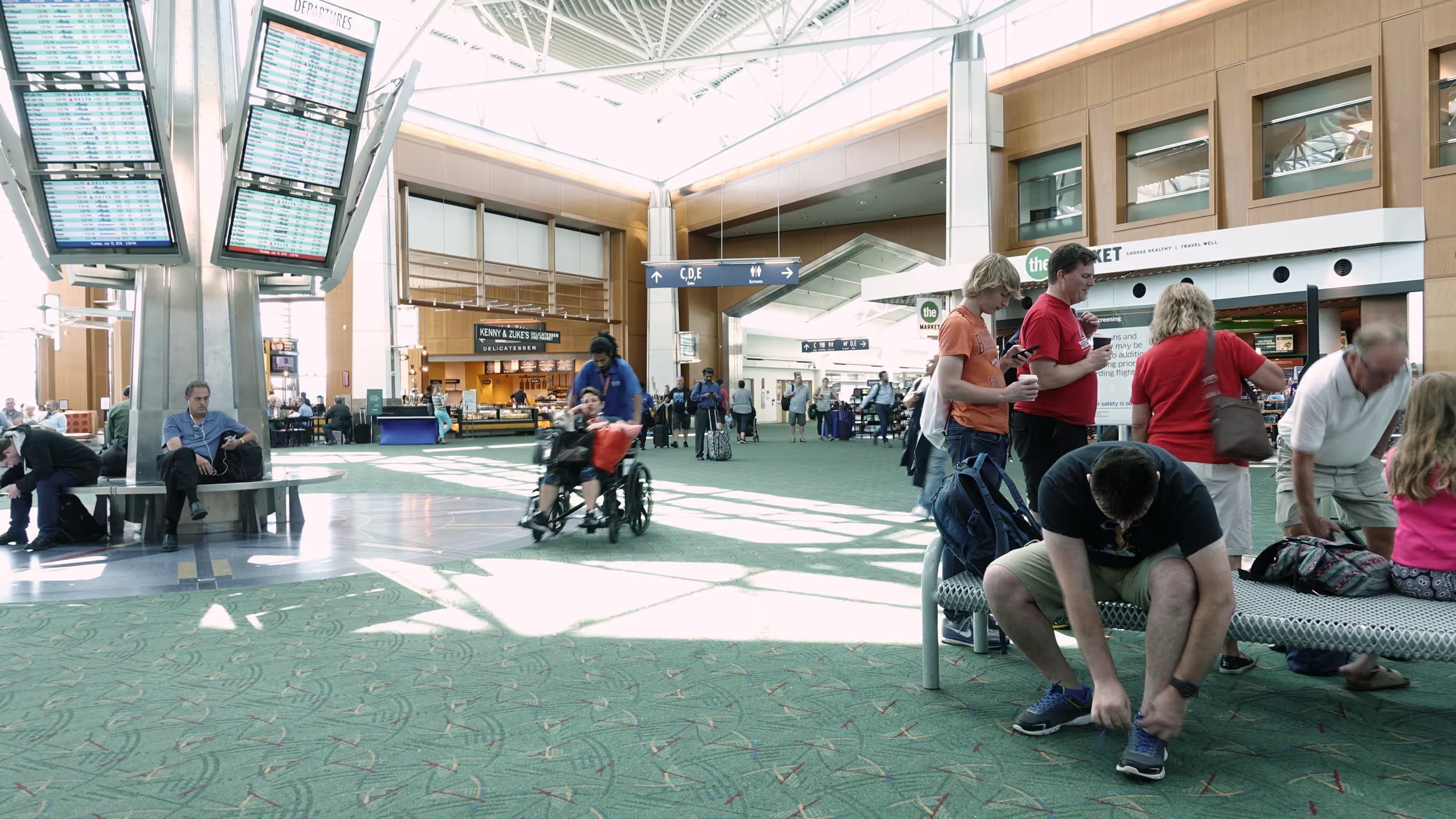Construction Crew Management Guide: 8 Steps to Control Costs

Moving one crew between sites can derail your entire week causing missed deliveries. Inefficient crew plans lead to missed deadlines and longer projects, paying workers to wait rather than work.
The problem worsens with inaccurate time cards. Each imprecise hour increases payroll costs, distorts job costing, and compromises future bids. Crews lose motivation when paychecks depend on estimates.
What you need is a practical system combining field-tested common sense with technology.
Read this guide and learn how to master the fundamentals; reduce admin time, boost crew satisfaction, and improve profit margins
1. Define Your Project Goals, Roles & Expectations
Start every job with the same discipline you bring to pouring concrete: level the base before you build. When goals, roles, and expectations are nailed down, crews waste less time arguing over who does what.
Begin with clear, measurable project goals.
Think in plain numbers like square feet framed per day, inspection sign-offs per week, or "zero lost-time incidents." Tie each goal to a crew lead who owns the result.
Next, build role cards.
Keep them to one sheet that covers what this role installs, inspects, or signs off on. Include their production rate, quality hits, and safety metrics.
Include reporting lines for approvals, spending limits, equipment authority, and required certifications (lift tickets, OSHA 30, welding qualifications).
For trade hand-offs, use a RACI chart like this:
R = Responsible, A = Accountable, C = Consulted, I = Informed.
Post in the site trailer to resolve disputes.
Finally, before crews arrive, prepare a deliverables checklist including approved scope/drawings and two-week labor forecasts per trade.
You should establish daily communication (morning huddle, end-of-day recap) and clear quality standards.
Templates help, but discipline is essential. Crews respect managers who provide clear targets with authority to achieve them. Tight role clarity married to solid checklists sets the stage for smooth scheduling and keeps you out of the rework business.
2. Build & Maintain a Dynamic Crew Schedule
Good schedules work like a ratchet; moving your project forward step by step without slipping backward. The key is planning for problems.
Start by connecting every work hour to your project estimate. Put all crew schedules into one visual chart showing which tasks depend on others and when trades need to hand off work. This keeps everything in one place, preventing surprises like plumbing delays after drywall crews have already arrived.
Add a safety buffer for things outside your control. Past projects show you should build in 10-15% extra time for weather delays and material issues. Include this buffer in your schedule from the start. This way, when rain stops your concrete work, you can move crews around without derailing the entire project.
Once your base schedule is set, create a detailed two-week plan. Update it every Friday, confirming workers, equipment, and deliveries for the next two weeks, then roll it forward. Add any approved changes to the schedule—delays happen when changes aren't documented right away. Use color codes to show when workers are double-booked across different job sites.
Paper schedules and spreadsheets work for small projects, but once you manage multiple sites, you need better tools. Cloud-based systems that connect scheduling with time tracking show you who's working where and how today's progress affects tomorrow's crew needs.
Remember that managing your people is top priority. Watch for excessive overtime and rotate crews so nobody works too many long weeks in a row. Tired workers make mistakes, and injuries cost more than hiring additional help.
A good schedule is a flexible plan that adapts to your project's changing needs. Keep all information in one place, prepare for problems, and schedule your teams carefully because every hour on site counts.
3. Coordinate Travel, Lodging & On-Site Logistics
Effective travel coordination is a hidden profit center.
When crews arrive rested at the right location with proper accommodations, productivity rises while costs drop. Smart travel management saves thousands in indirect costs while preventing schedule disruptions that blow budgets.
Plan Ahead to Save Money
Count your crew before booking travel.
Match travel dates to your two-week schedule to avoid paying for empty rooms. Book immediately after setting the schedule—waiting just one week can increase rates by 20%, cutting directly into profit. Early booking prevents the last-minute scrambling that frustrates crews.
Choose Practical Locations
Remote locations can double transportation costs when you factor in time and vehicle wear. Select hotels within 15 minutes of the worksite. Ensure accommodations offer secure parking for trucks and equipment and arrange car rentals before arrival.
Avoid Sunk Costs When Plans Shift
Always get flexible cancellation terms. Weather delays happen on even the best projects, and non-refundable rates put all risk on you. Never use personal credit cards for group bookings—cards hit limits at critical moments. Use direct billing with monthly invoices and link every room to a job code for better tracking.
Upgrade Your Booking System
Traditional methods work until your project timeline changes. Then you're stuck updating reservations one by one.
Specialized platforms like Engine offer better solutions:
- Centralized and simple group booking
- Cost-effective travel arrangements for flights, hotels or cars
- One monthly invoice for clear tracking
- Flexible cancellation for hotels
- Live 24/7 support and a dedicated group sales manager

4. Implement Accurate Time & Productivity Tracking
If you're still guessing where crew hours go, you're losing cash. But without real data, you're stuck with payroll disputes, blown estimates, and those useless "where did the day go?" conversations.
The financial impact hits your bottom line directly.
Accurate tracking means paychecks match actual work, eliminating overpayments while building crew trust. Your job-cost reports become reliable instead of fictional, turning your next bid from guesswork into a calculated decision.
Your tracking method matters as much as the data itself. Paper timesheets seem simple but fall apart in the office; one smudged number and payroll is wrong for a week. Spreadsheets clean up the handwriting problem but create new ones when someone re-types hours or breaks formulas. Better tools like digital tools that capture time in the field, verify with GPS, and send data straight to payroll.
5. Focus On Communication
Ten minutes at the start of every shift saves hours later. Daily huddles give your crew a clear plan and stop the "I thought you were doing that" headaches that stall work.
Here's your huddle blueprint:
- Minute 1–2: safety talk—what changed overnight?
- Minute 3–5: today's critical tasks and hand-offs
- Minute 6–7: material and equipment checks
- Minute 8–9: open floor for roadblocks
- Minute 10: document decisions and pick tomorrow's facilitator
Even with good huddles, conflicts surface. Handle them fast. Most clashes start when teams don't see the same data. Real-time updates from project management platforms keep timelines aligned, cutting off arguments before they start.
6. Motivate & Retain Your Crew
Finding skilled hands is hard but keeping them is even harder. Construction firms report that 83% struggle to hire qualified workers, so every person you keep saves you from the long recruiting process and training costs.
Tie recognition to numbers your crew actually cares about.
Zero safety incidents for a month gets called out. Beat the daily production target by 10%? That's a win worth celebrating. Fewer call-backs and rework means quality work that doesn't come back to bite you.
Perfect attendance for a full pay period deserves recognition too. Concrete numbers make praise real instead of feel-good corporate talk.
Celebrate fast and cheap.
Friday cookouts work better than plaques nobody looks at. Gift cards, early dismissal after hitting aggressive milestones, or letting the crew pick the lunch spot all cost less than formal recognition programs.
For bigger wins, like a quarter without injuries, go bigger: crew jackets, performance bonuses, or paid training hours that move workers toward better pay grades.
Linking bonuses to clear targets keeps costs predictable while showing the crew what good work looks like.
Show your people where they're headed.
Rookies need to see how they become foremen. Pay for certifications that bump their hourly rate. Pair veterans with newcomers so knowledge stays on the job instead of walking out the gate when someone retires.
7. Prioritize Safety & Compliance
Safety in construction is where profit and protection meet.
Poor safety practices lead to injuries, work stoppages, and hefty fines that eat your margins. Construction sites rank among the most dangerous workplaces, so a solid safety program doesn't just prevent accidents, it keeps your best workers on the job.
Start every project with a safety plan.
Walk the site, list the hazards, document how you'll handle each one. Discuss hazards during a daily huddle to keep those hazards fresh. Building on this foundation, weekly PPE checks catch problems before accidents do.
Despite these preventive measures, when something goes wrong anyway, log it the same day. Investigate to prevent it, not to blame someone. To further strengthen compliance, tie safety to money. Pay a small bonus for every near-miss reported.
8. Use Technology & Emerging Tools
You don't need another "enterprise platform."
You need tools that keep crews moving. Today's job-site technology does just that when it's built for field reality rather than boardroom demos.
No tool works if your crew won't use it. Run through this checklist before you buy anything:
- Handles five guys or 200 without buying more licenses
- Works on a cracked phone in the rain, not just a laptop in the trailer
- Connects to your payroll and cost tracking without breaking everything
- Lets you keep your data when you want to leave
- Pays for itself in saved overtime and rework, not made-up efficiency numbers
Tools make good practices better. They don't fix broken ones. Digital daily reports beat soggy notebooks, but you still need foremen who write clear notes.
Start Managing Your Construction Crew Better
Nothing here is theory. It's field-tested steps you can use one at a time. Start with the problem that fixes your worst headache. If travel chaos drains your time, a tool like Engine is purpose-built for crews and can wipe out hotel and receipt problems in a week with simplified booking and unified billing that eliminates receipt collection. Sign up for Engine now!








.jpg)








.avif)
.avif)



















